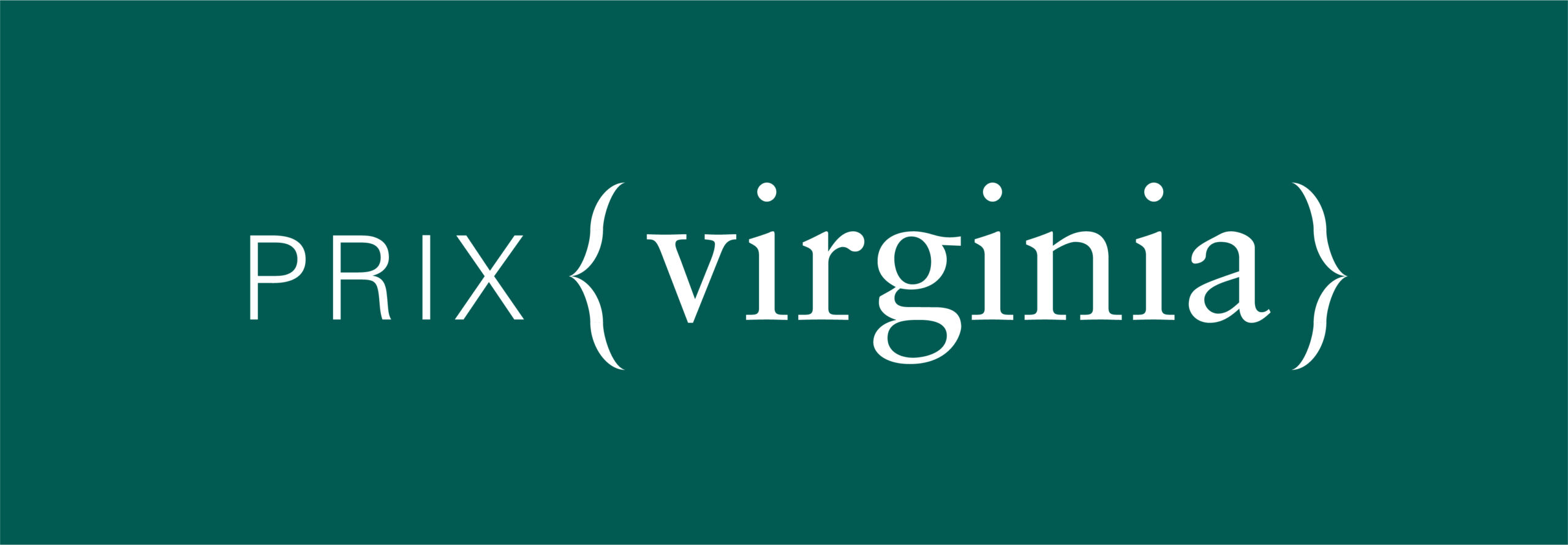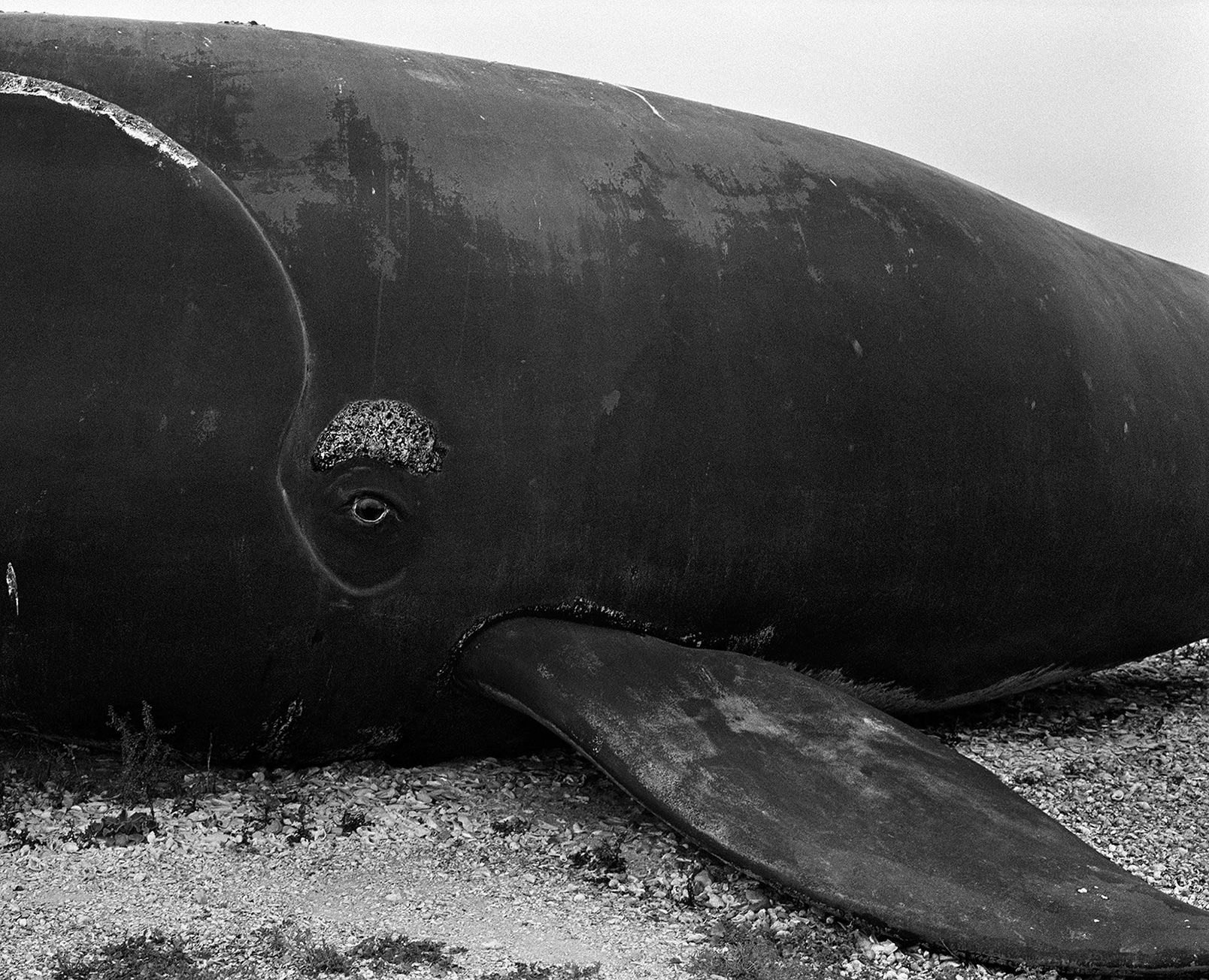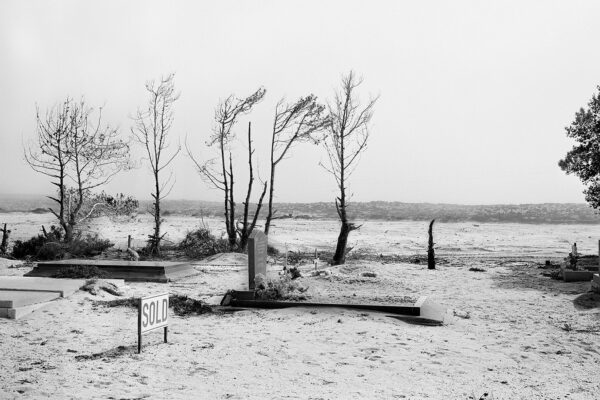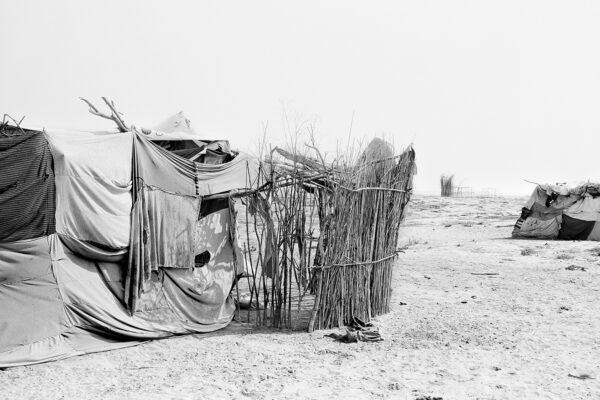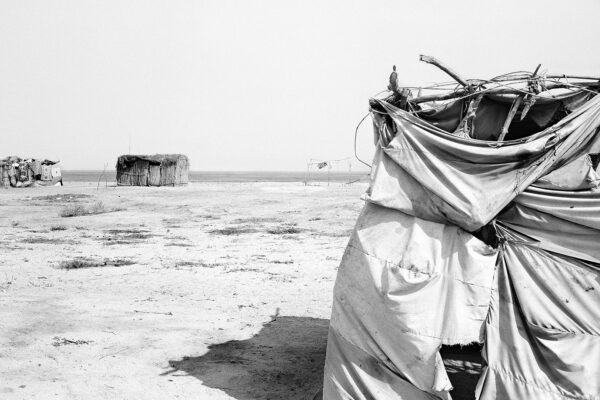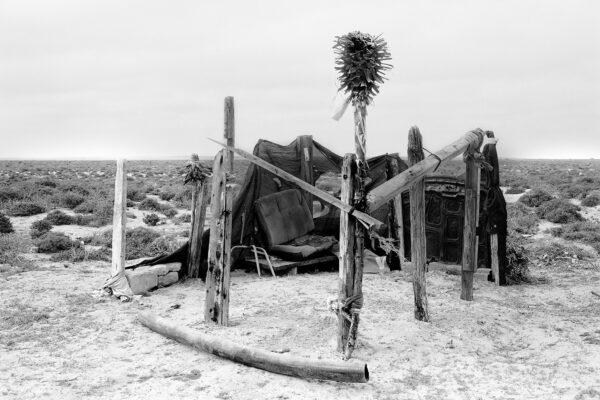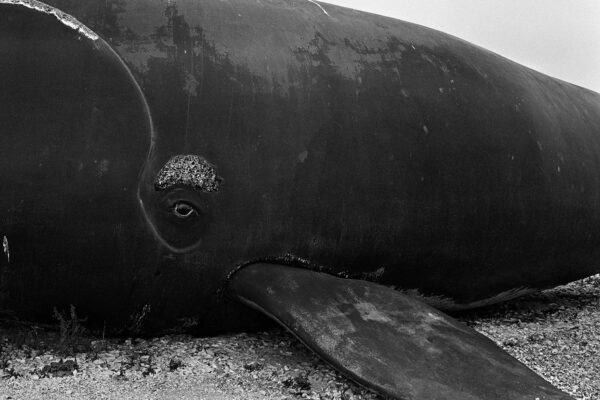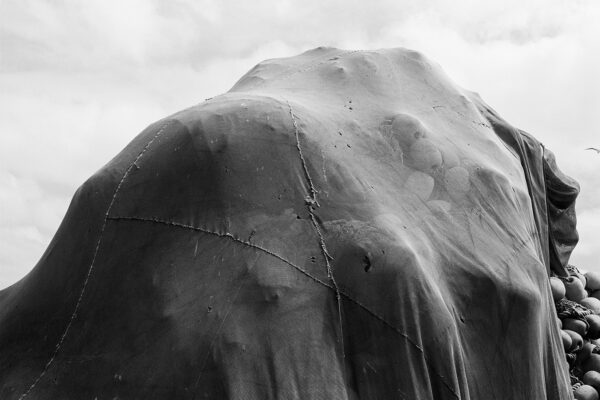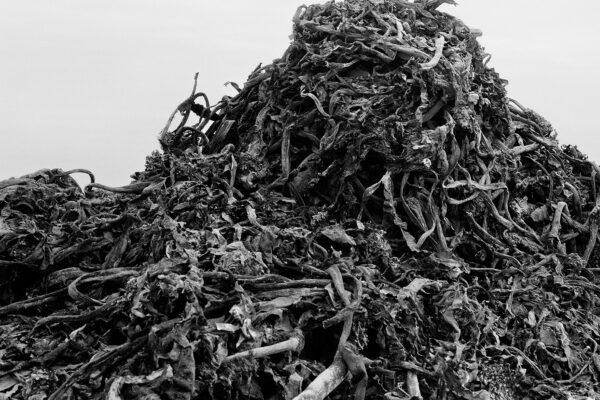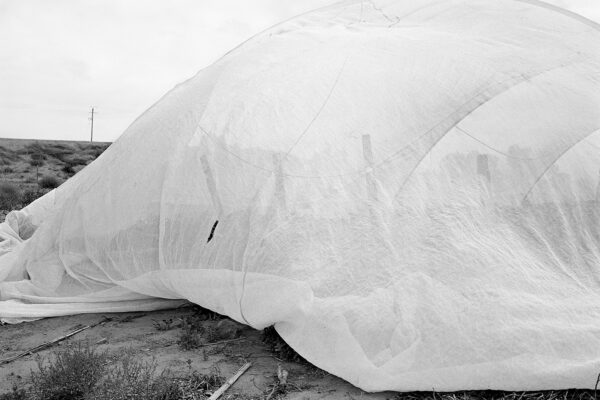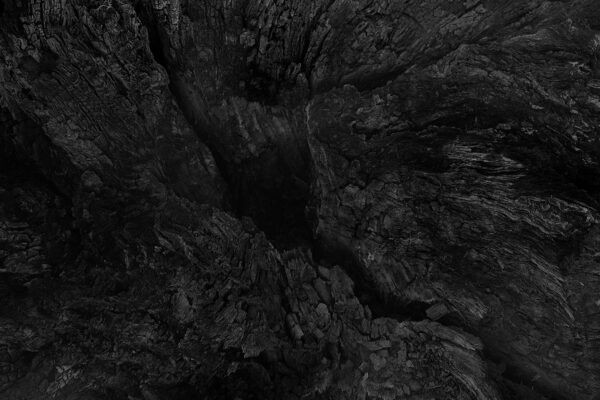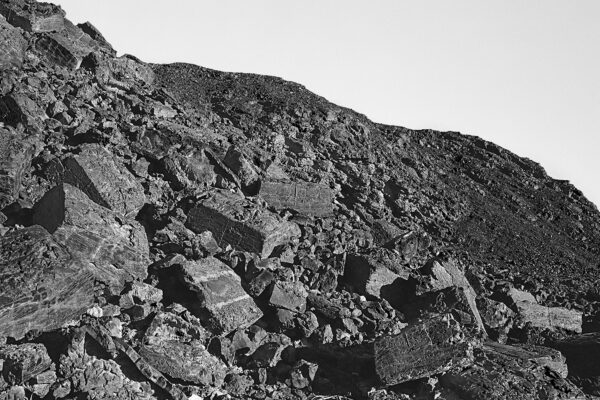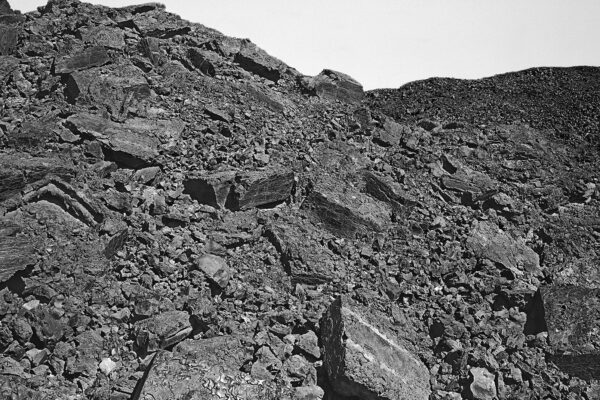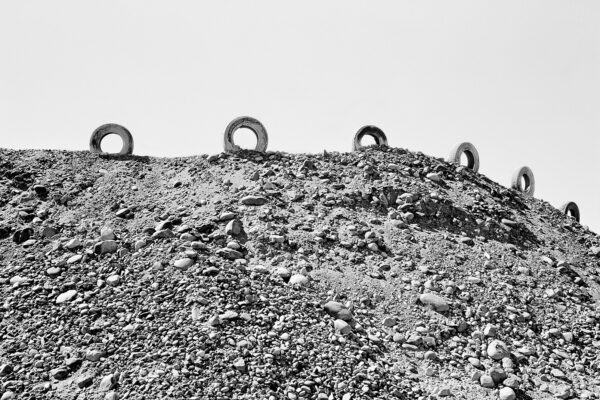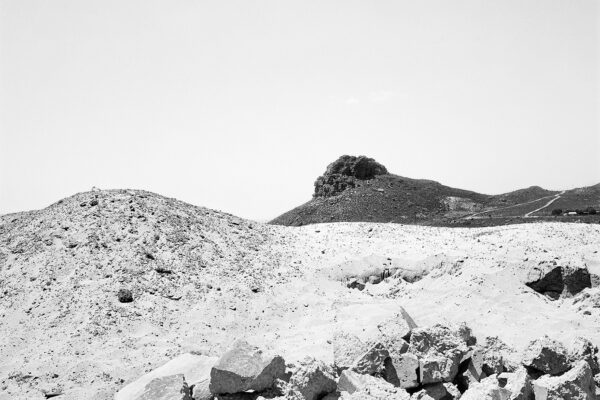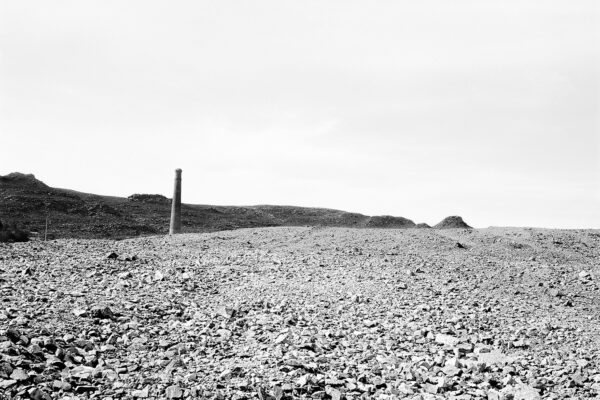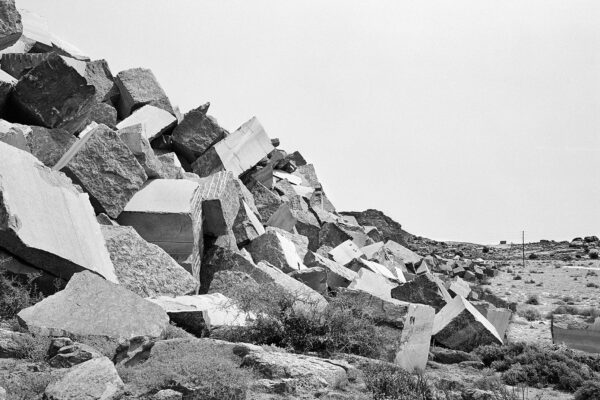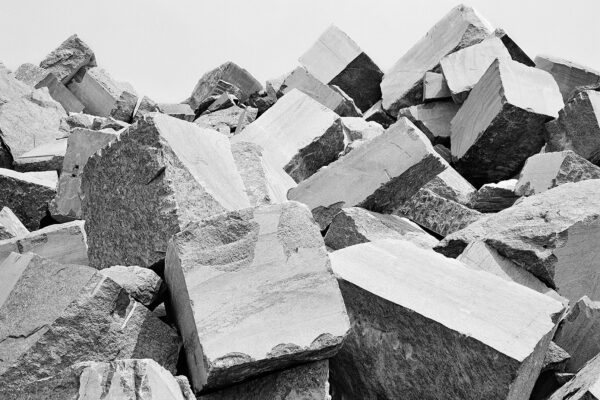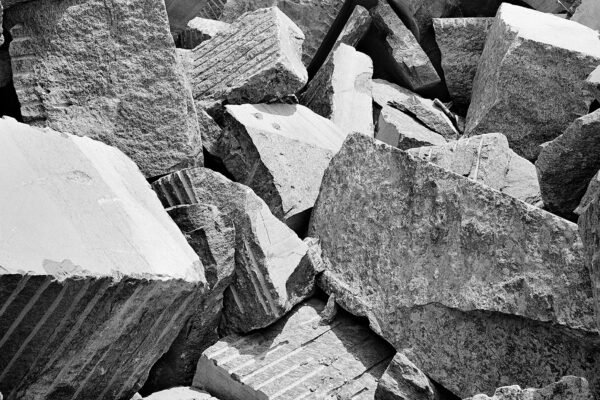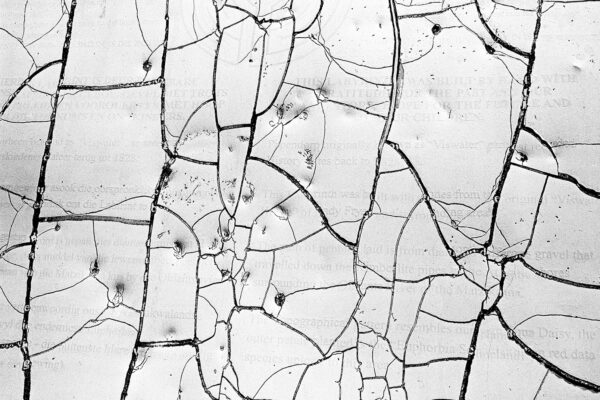Jo Ractliffe
Lives and works in South Africa
Landscaping
Landscape is a way of seeing that has its own history, but a history that can be understood only as part of a wider history of economy and society.
Denis Cosgrove, Social Formation and Symbolic Landscape, 1998
In October 2022 I took a drive along the national road that runs parallel to South Africa’s Atlantic coastline all the way from Cape Town, to Namaqualand and the Namibian border. I drove through farmlands, fishing villages and mining towns, and up past the endless swathes of land laid waste by the mining industry. This is the land of my childhood. My first photographs were made in places along this West Coast. It was 20 years since I had last been here.
Many towns in Namaqualand came about with the ‘discovery’ of copper in Okiep in 1685. In 1926, the discovery of alluvial diamonds along the Orange River mouth brought a new rush of adventurers, and mining took hold. Frontier mythology resurfaces in the contemporary romanticism of the West Coast and Namaqualand; tourist brochures relate stories of whalers, sailors and shipwrecks and descriptions of ‘unspoiled scenery’, ‘quaint historic towns’, ‘friendly locals’ and ‘warm hospitality’.
Absent from this narrative is the actual lived experience of local communities, those previously dispossessed of their land and who remain marginalised and unresourced. The aftermath of over a century of industrial extraction of diamonds, copper and heavy mineral sands along this coastal landscape has left a blighted countryside; once-flourishing mining towns lack proper services and the unemployment rate is one of the highest in the country. Today, local residents still live amongst the mines, tailings heaps, smelter sites and treatment plants. Such broken terrain brings to mind Rob Nixon’s concept of ‘slow violence’, which he defines as “a violence that occurs gradually and out of sight, a violence of delayed destruction that is dispersed across time and space, an attritional violence that is typically not viewed as violence at all”.
When thinking about how I could photograph these places I was forced to confront the idea of ‘landscape’; to reconsider what makes a landscape in photography? I have always struggled with the term, the way it speaks to a view, rather than actual concrete space – and how it seems to conflate this view, or representation, with the actual place itself. But the term ‘landscape’ is not geography or space out there; it’s already a contrivance. And to speak of landscape in terms of beauty, or even unsightliness for that matter, is to observe rather than participate, to reduce space and place to a concept rather than lived experience.
In his book, Landscape and Power1, W J T Mitchell argues that ‘landscape’ should be considered a verb rather than a noun, something that shapes and is shaped by social and political practices. With Landscaping as the title of this work, I have tried to activate our thinking about landscape, to make of it a ‘doing thing’ that resists easy description or categorisation, and asks us to consider where we look from and what is it that we think we are looking at.
Note: This work was made with the support of the Lewis Baltz Research Fund 2022.
